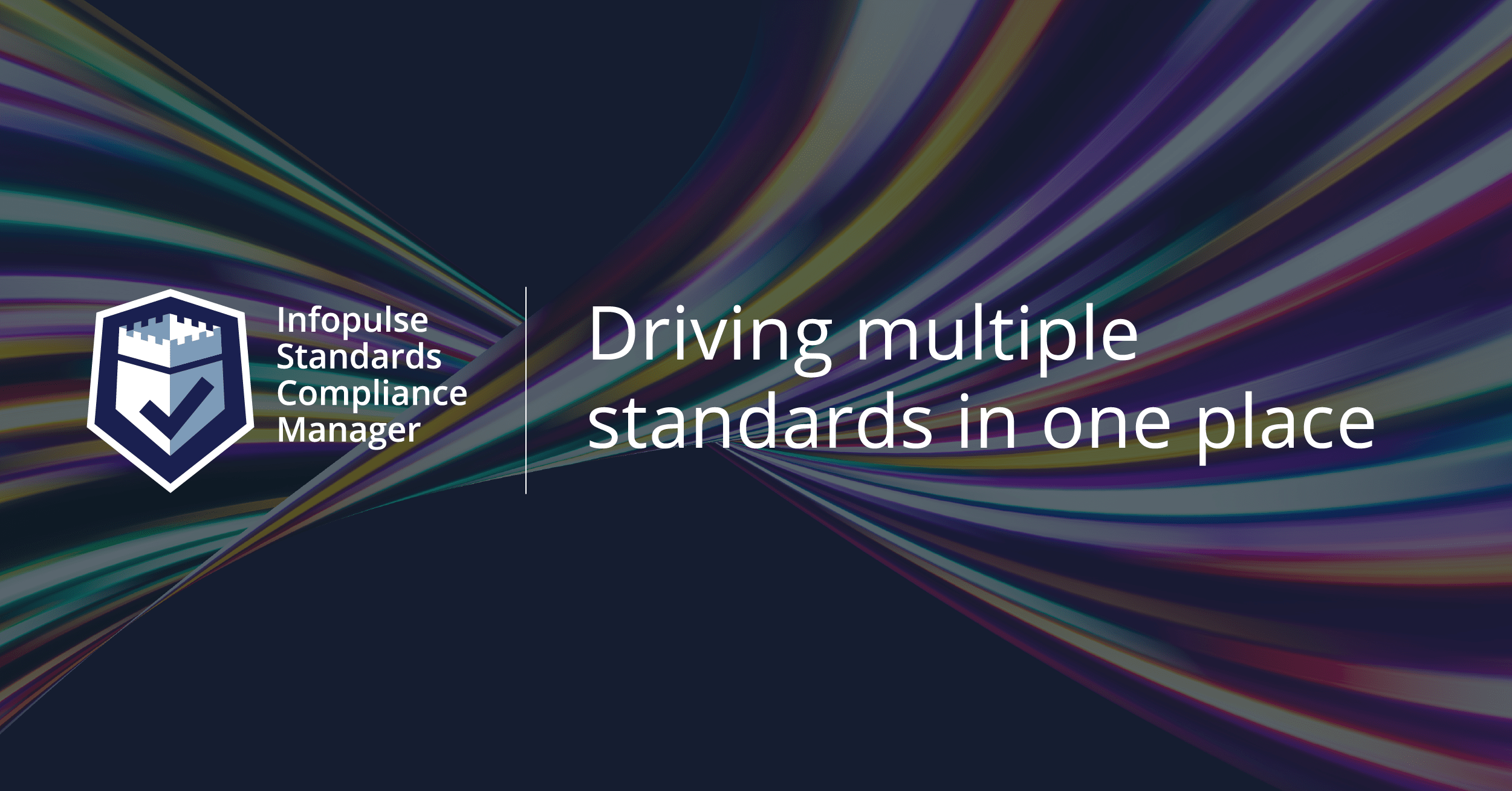GRC Solutions: Managing Multiple Standards Simultaneously

Over the past several years, the importance of establishing company-wide, adequate quality, security, and business continuity systems has dramatically increased. A continually growing number of companies are striving to enhance their performance by following existing and emerging standards and regulations. Organizations have to comply with them to maintain, e.g., security, privacy, and continuity of their business.
What Are the Key Challenges of Building Multi-Standard Compliance Strategy
When aligning with many standards, the process of gaining compliance often involves too many programs, processes, individual efforts, and may become a mess. Let’s point out the significant challenges that compliance officers face when managing several standards for one organization.
Handling Repeated Information
With each new or updated standard or regulation, the responsible manager has to implement it in the system. He needs to upload all company assets, apply requirements to these assets, apply controls to them according to the new or updated version of the regulation or standard. Whether copy-pasting or doing it from scratch, it takes time and effort, not to forget the human error that comes with C&P and repetitive work.
The compliance officer has to deal with the continuously growing number of regulations, rules, or updates, filling in information repeatedly. Here is why one system compliance approach is the solution.
An integrated GRC solution can help you be more productive, as it allows you to overlap specific requirements, put multiple standards into one concept, and leverage it to identify gaps. Thus, you can quickly compare the same requirement/safeguard for a new or updated regulation, so that you can re-use it for another applicable standard.
The Compliance Silo: How to Manage Multiple Standards
Compliance silos are often a significant challenge when dealing with several standards.
Handling assets, requirements, and controls for multiple standards often becomes complicated. Some information remains static, while other data is dynamic and changes continuously. Usually, the compliance officer has one standard per concept, but what if details for multiple standards are similar? Every time, you have to switch from one standard to another to check assets, requirements, etc., you spend excessive effort and time.
To successfully apply similar requirements and corresponding controls to assets, it is necessary to use practical tools to meet all your compliance needs.
SCM will ensure seamless operation without needing to process the item from scratch every time there are updates in the regulation or overlap with another standard in use.
Tools That Can Cover All Your Compliance Needs
Using tools that aren’t capable of simultaneous management of standards is what often creates silos.
Companies that are starting their compliance journey can choose Excel as a management tool because it is familiar. Yet, it may end up with piles of spreadsheets and lots of extra routines that are more likely to hold up the compliance workflow.
Please read more to understand why Excel is not the best choice for compliance management.
Today, as this topic is peaking, the modern GRC solution for compliance operations can cover inventory analysis, risk management, and compliance checks in a standardized process.
Use Case: Switching Between Standards In One Environment [ISO 27001 and IT-Grundschutz]
Assuming a company has re-considered the business goals and decided to switch from ISO 27001 to IT-Grundschutz.
IT-Grundschutz is based on ISO 27001, but it is more specific and technically oriented.
The ISO standard is aligned more with business processes, while IT-Grundschutz refers to the equally technical, infrastructural, organizational, and personnel aspects. According to ISO 27001, the risk analysis and the evaluation of the risk objects play a decisive role. Meanwhile, IT-Grundschutz states that risk analysis is only required in individual cases (it is required for Standard and Core but is not obligatory in the Basic level of protection). In ISO 27001, it is necessary to identify the risks for the assets independently; the BSI IT-Grundschutz specifies the typical threats for defined modules and provides in-detail controls to each requirement.
Some requirements in these standards intersect. Why would you need to make the double effort in searching or uploading the new data sets into the compliance tool? If a company has already specified controls for ISO27001, it can re-use these controls for another requirement in IT-Grundschutz.
Infopulse SCM allows you to effectively manage overlapping environments all in one place and quickly adjust workflows and processes to the compliancу & risk needs.

Benefits of Using GRC Solutions that Support Multiple Standards
- Harmonizing management of all standards in one place – you get a consolidated view of all applicable standards in one concept.
- Implementing custom standards into SCM.
- All existing relevant data can be re-used with every new or updated regulation.
- Linking new requirements to the existing assets.
- Cross-implementing the existing controls for more than one standard.
- Simplicity in the management of multiple threats from common threat catalogs if they intersect for multiple standards.
- Well-structured compliance management framework consisting of regulations, clear user roles, processes, operations, assessments, and procedures.
- Effective gap analysis allowing you to find overlaps and gaps between regulations and eliminate redundant controls.
The benefits of aligning multiple standards in one GRC solution are clear. However, developing an efficient compliance framework with many standards might require significant time and effort. Enforce your digital advantage with up-to-date GRC solutions for building effective compliance strategies.
Try Compliance Aspekte For Free
Book a 1-2-1 Live Demo and Obtain a 3-months Non-binding Trial
